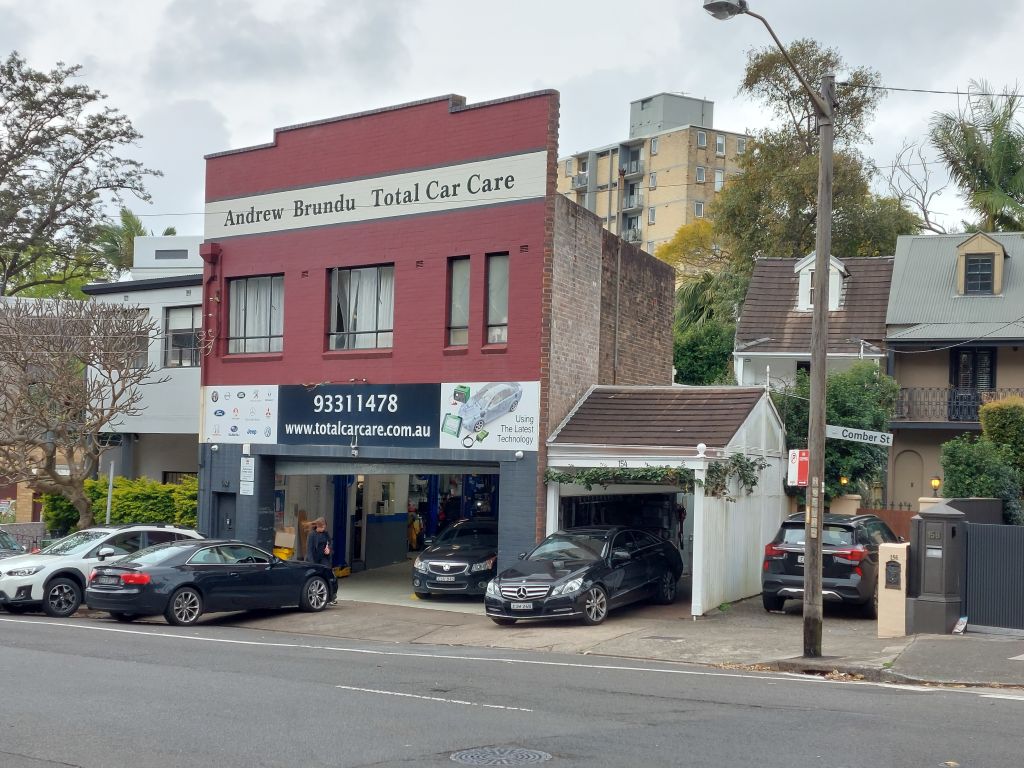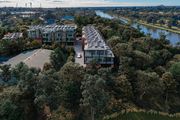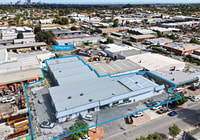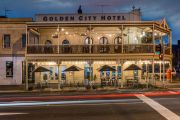
Part of the inner-city fabric
For the past 15 years, mechanic Andrew Brundu has had a workshop in the middle of a residential street in Sydney’s Paddington – and both he and his neighbours love him being there.
“I always strive to be part of the community, and I’ll check the oil in the car of an elderly woman who lives nearby or I’ll let people park on my forecourt if they can’t find a park and I’ve got room,” says Brundu, 60, who runs his Total Car Care premises side by side with terrace housing.
“And, I won’t work beyond 5pm or at the weekends. It’s all about being a good neighbour.”
Once, planners imagined a future where such properties would all move to business parks outside cities but, instead, small industrial workshops, factories and warehouses are increasingly staying put, or even newly setting up as infill development in residential areas.
“It depends on the type of business and the volume of goods they’re dealing with as you don’t want to be in too much traffic congestion,” says Mark Clifford, of Knight Frank, partner and head of industrial logistics, Queensland. “But, small business owners like to be close to their businesses.
“I think industrial is now being seen as a necessary part of the city, and a more respected part – particularly hi-tech processing to reduce our reliance on imports after COVID. It’s almost cool now to live next to warehouses or businesses – as long as they’re not dirty or too noisy. And, a lot of the new designs coming in are making them look pretty sexy.”
Many of the new industrial businesses have offices above and are being planned to fit in nicely with residential, with elegant entrances and stylish facades, Clifford says. The days of old tin sheds, and dirty heavy manufacturing – which has now mainly gone offshore – are well and truly in the past.
In addition, several former industrial precincts such as South Sydney and Woolloongabba in Brisbane are being rezoned to bring in more residential, so the two are side by side there, too.
Brendon Quinn, general manager NSW industrial developments for Goodman Group, says his company has about 40 infill or inner-city sites in the redevelopment pipeline. These could be for warehousing or light manufacture.
“We definitely see an important place in the supply chain for those facilities, close to dense population centres and the CBD, airport and the port, which complement those in outer areas and greenfield sites,” he says.
“Last-mile facilities for parcels and repackaging are critical as expectations are changing and people want deliveries in 30 minutes, or even 15.”
This has seen a move from white trucks to white vans, as industrial operators search for city infill sites for their warehouses closer to delivery destinations, agrees Jesse Curtis, Centuria head of industrial and CIP fund manager.
“Everyone wants a decentralised delivery network to get to consumers’ front doors quickly,” he says. “We’ve seen logistics groups from Australia Post to DHL moving to multiple last-mile distribution centres in infill locations. Eighty-five per cent of our portfolio is last-mile locations.
“Industrial companies want short drive times of under 30 minutes from their facilities to large population bases, and the only way you can do that is having multiple facilities in metro areas. The difficulty is that in some metro markets, the vacancy rate for space is virtually zero per cent.”
There’s also a demand from boutique or niche manufacturing which can take place in these kind of areas with products like food, which also have to reach customers quickly, Quinn says.
In these cases particularly, he believes it’s always important to make sure these industrial premises are cleverly designed to make sure they fit with the aesthetic of the surrounding residential area. Often these days, as well as the progressive architecture, they are thoughtfully landscaped to add to the look and amenity of the neighbourhood.
Goodman works closely with clients to research the transport costs and delivery times of operating from those kind of infill sites, and the technology to optimise those smaller spaces.
“In Sydney suburbs like Brookvale on the northern beaches, we’re seeing industrial assets bring amenity and life and extra attractions to the areas,” Quinn says.
And, when the life is all around them, both sides tend to benefit. Although industrial is having to compete with high residential rents and prices, industrial is still making solid returns, Clifford says.
“You still see the odd car yard between townhouses in the city and they can’t be evicted because of the original zoning. Things have just changed around them, but everyone finds their connections.”
That’s certainly true of Brundu. “I care about the area too and keep everything clean and tidy,” he says. “I like to help out where I can as well, and in the past I’ve turned the premises into an art gallery for a group trying to raise funds. It worked out well.










